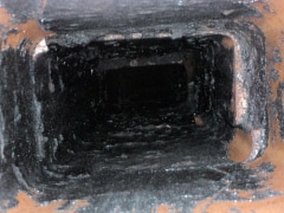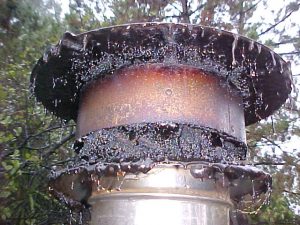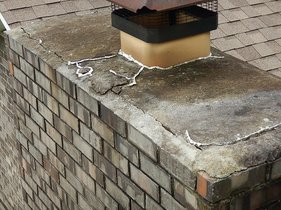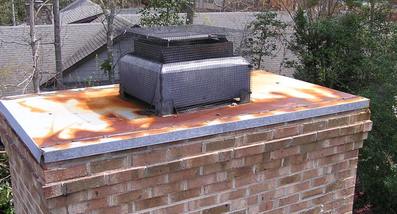|
For those of you that have a fireplace and chimney, when was the last time that you had it inspected? It's one of those things that folks just do not think about until they have a problem, that same can be said for septic tanks and that will be a topic for another day! Homes generally have a masonry chimney flue or a metal fabricated flue. The modern or more common masonry flues are usually lined with a terra-cotta tile liner which provides a smooth solid surface for the smoke/combustion gases to escape. The metal flue is usually fabricated in sections and assembled with interlocking sections forming a smooth solid surface as well for the smoke to exit the chimney. Regardless if it is masonry or metal they both need to be maintained, they are not maintenance free! I'm going to address two of the most common problems that I find with chimneys. Creosote When wood is burned, more than just smoke goes up the chimney. Creosote is deposited inside the chimney lining. Creosote is a black or dark brown tar, and soot is a fine carbon powder which colors smoke. The combination of creosote and soot is usually what is referred to as creosote in the chimney. There are several forms of creosote, they are all dangerous because they are flammable and can cause chimney fires. Every year, many thousands of house fires are caused because of dirty chimneys which haven’t been properly maintained. This is why it is so important to have your chimney cleaned and inspected by a qualified chimney sweep on an annual basis if you use it often. The following pictures are chimneys with creosote problems!  A tile lined chimney with a heavy buildup of creosote. Major fire hazard that is just waiting for a spark to ignite the creosote.  Metal chimney with one of the worst cases of creosote buildup I have ever seen. The entire metal flue had to be replaced on this home. The chimney crown and cap The top of your chimney structure is called the chimney crown the flue pipe is surrounded by the crown. If you have a chimney cap, which is recommended it will be on the top of the flue pipe. If a masonry chimney crown becomes cracked, it needs to be repaired so that moisture doesn’t get into the chimney system. With a metal fabricated chimney you will have a metal crown. While metal crowns do not crack, they do rust and corrode and have a typical lifespan of 20 years before they need to be replaced. Moisture is the largest natural enemy to the chimney system and can cause damage to the masonry, lining, firebox, damper, ceilings and walls in your home, and more. Chimney caps also protect the chimney from moisture but also keep out critters, birds and other debris. With a masonry or metal chimney the crown protects the entire chimney structure by shedding water. A good crown will keep water out of the chimney structure while a bad or cracked crown will allow water to seep into the chimney structure which can cause extensive damage to the chimney and the home. This is a metal chimney crown that needs to be replaced. It has rusted through and water is seeping into the home.  This masonry chimney has a severally cracked crown and the cap is corroded. Be sure to look for a chimney sweep that is a member of the National Chimney Sweep Guild and the Chimney Safety Institute of America. Their members tend to be the leaders in their profession. Good chimney sweeps can keep your fireplace and chimney in good working condition for years and years of enjoyment. |
AuthorScott Patterson has been a professional home inspector since 1995. Scott works out of the Greater Nashville TN area. Contact his team at Trace Inspections for all of your inspection needs. Archives
May 2024
|


 RSS Feed
RSS Feed